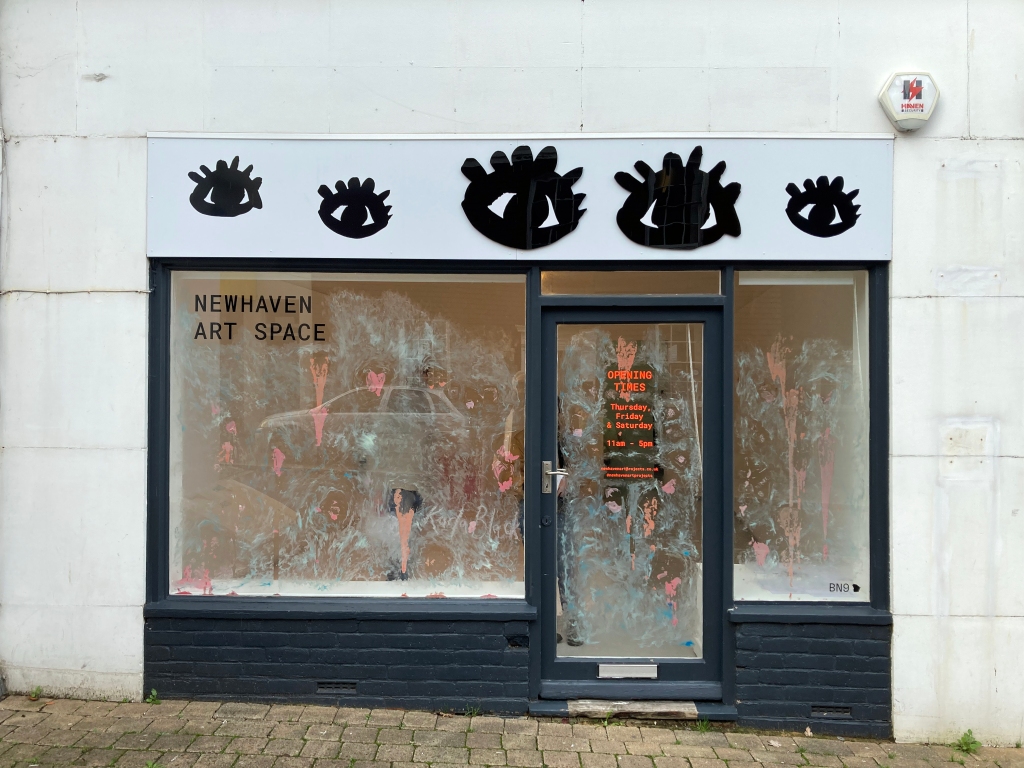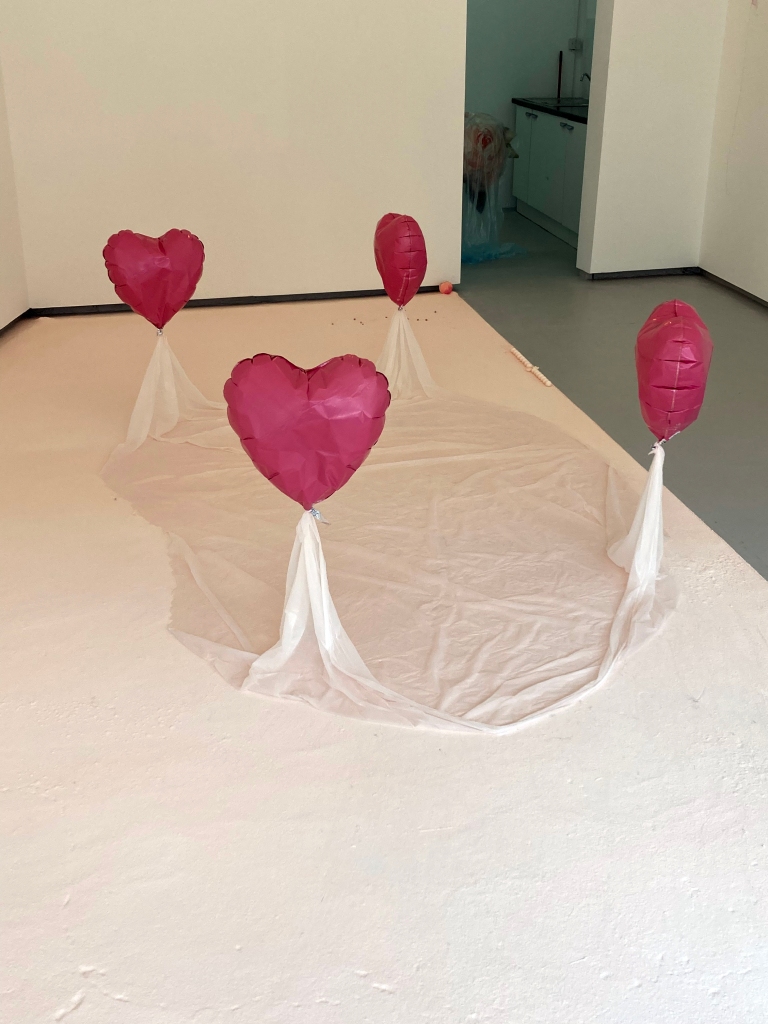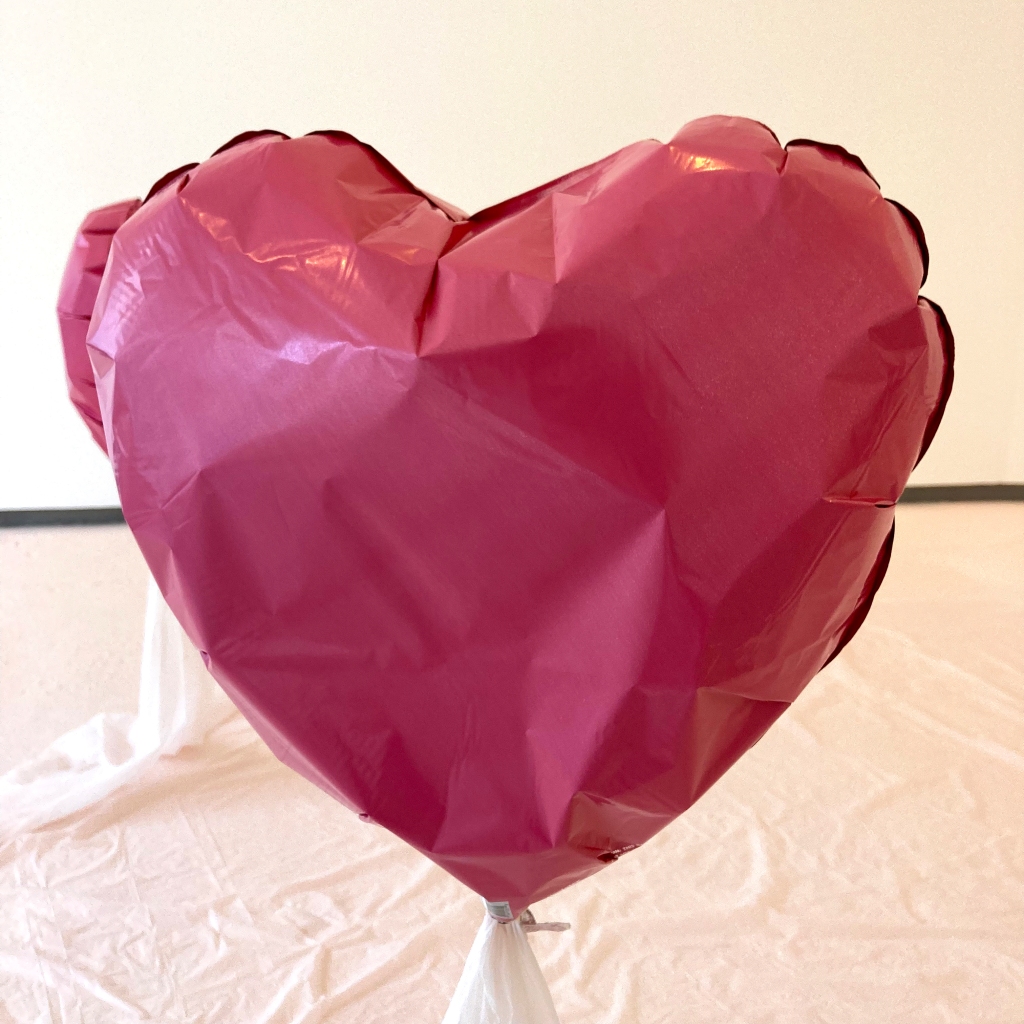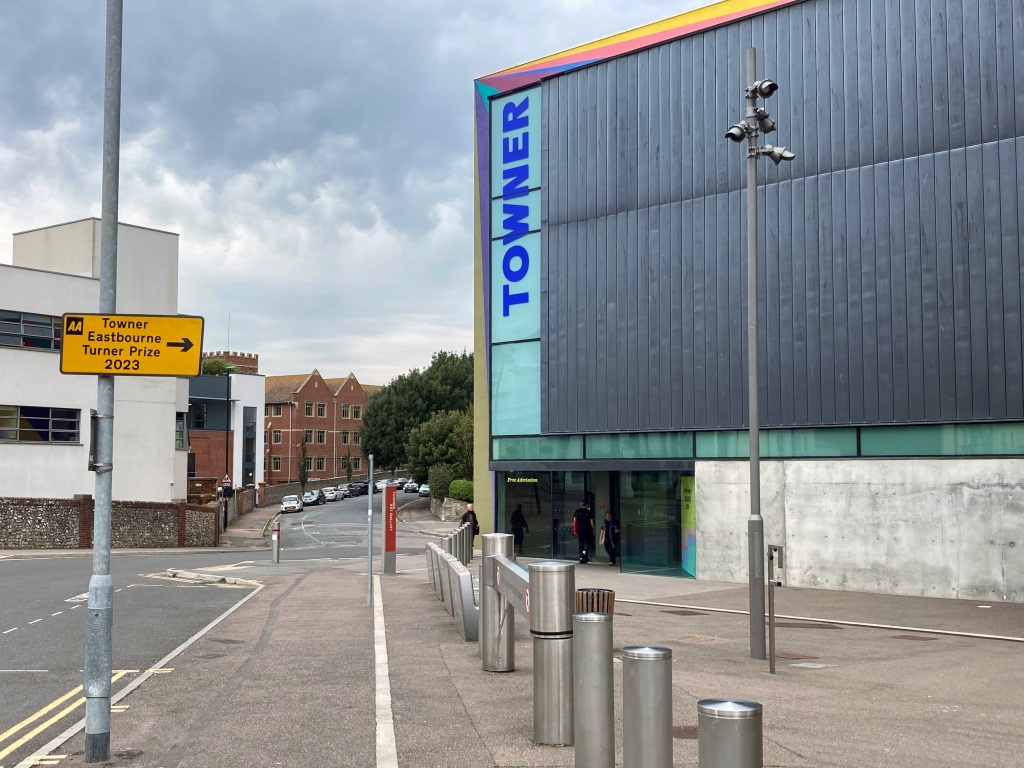Newhaven Art Space, 24 High Street, Newhaven, BN9 9PD
21 September to 2 December 2023
Sadly, the empty shop on the high street is a phenomenon exacerbated by the economic decline that characterises present-day Britain. It’s also hardly surprising now that we buy so many of our goodies online too. So an alternative reason to visit a town centre site might be to see and experience contemporary art. Why not? Newhaven Art Space is a gallery and community project venue supported by Arts Council England and the Newhaven Enterprise Zone and was set up by artists Helen Turner and Nicholas Marsh just over a year ago. They invited Glasgow based, Karla Black, a fan of such spaces, to install an exhibition of her work. It feels like a gift to the town and has hopefully brought in visitors from across the county.
I have arrived four weeks after the opening. I have to mention this fact, as I regret not attending sooner. ‘Karla Black’ is evidently a show that should, ideally, be revisited as the materials used to create many of the works have a life of their own. There is constant change going on, at a slow pace. If you are already a fan of Karla Black’s work you will be aware of her preference for the non-conventional, or just unexpected, type of art material. So perhaps you will expect to see Vaseline, lipsticks, bath bombs, blusher balls and helium balloons in addition to oil or powder paint. But the time aspect is crucial too, as the various materials will be smearing, melting or, in the case of helium filled balloons, degrading and deflating. Ideally it’s a show to visit day after day, or at least at the beginning, middle and end.
But my partner and I have arrived at long last and we enter the premises prepared only by a few images from social media. Good old Instagram. This point is made, as I am not aware of coverage from the mainstream media, which is a little surprising considering that the Turner Prize is currently being held at the Towner in Eastbourne. Plus various shows and activities are taking place in Charleston, Lewes and Hastings (though sadly very little in Brighton), which are frequently featured in Sussex media outlets. We did, however, meet a couple from London that had visited Karla Black’s recent exhibition at the New Art Gallery Walsall and so the awareness is out there.
When Karla Black has intervened, you know you’re in for some fun. She has conjured a sculpture installation that has a pronounced impact on the viewer, even if it is initially one of surprise at the materials chosen to make the sculptures. Or it could be the ephemeral nature of most of the works displayed, for they have been made for the occasion and the space rather than the art collector’s vault. The front windows of the former shop have something pink and sticky looking smeared onto the glass alongside the Vaseline. Hand written smudges revealing the artist’s name take on a watery, flowing presence on the glass surface. Here today, gone tomorrow might be the sub-theme. The window decoration must have looked neat and tidy on day one, but a month later transformation has set in. Soapy pink blocks and blusher balls hearts have melted down the inside surface of the glass in the early autumn sunlight, which invokes natural processes on artificial mediums. The glass façade is strangely alive, albeit in slow motion.
The premises have been treated as a ready-made space with the potentially monotone grey floor of the larger of two rooms covered in a sandy looking substance, light pink plaster powder, which creates a landscape of sorts for four Barbie-standard pink heart shaped balloons and a row of blusher balls – one of which has unexpectedly but gently exploded at some point. The balloons, attached to a polythene dustsheet, must have moved around more obviously when first placed on view. The very slow motion of this raft (of sorts) is affected by air movement, and I assume the vessel gently decelerates as the helium diffuses from the balloons. A passageway has been left to one side for the visitors to stand in then walk further to a small back room with more deflating sculptures. En route are half a dozen or so small configurations of Vaseline, paint, blusher balls, lipstick, metallic thread and eye shadow affixed to the wall surface, attached by their inherent viscous tackiness. Again, impermanence is on display in pink, slimy glory. But these small and intimately configured compositions engage the viewer nonetheless.
There are small works on the walls in both rooms. They look like something, a process, is being tried out or tested. But this application of materials is a mode of sampling that is intentional and purposeful. The exploration and configuration of materials with the hand and eye is primary. Think what you wish afterwards.
How might a viewer react to this exhibition? There is equal potential for joy or sadness. On a colourful surface level there’s a child-like playfulness on display. But things come to an end. What does one read into materials that have, for the most part, changed their purpose? Or perhaps the conventional or typical use of any one medium (such as a party balloon) is only a limited starting point. Karla Black applies imagination and invention to materials. The materials are the key, whatever they are made of. In an interview for the New Art Gallery Walsall she considers materials as pre-linguistic. Our very distant ancestors had to deal with materials and processes before names and concepts were made up through a language medium. We are still conditioned to material processes, with language being far more expendable.
This exhibition lingers long after returning home. Days later I am still pondering about that sense of change, of a kind of indefiniteness, of the nature of time and duration, which opens the door for thoughts, for wordy language I guess. But no materials: no thoughts. The human condition is forged by play with materials. As children still do.
Links:
Newhaven Art Space – https://www.newhavenprojects.co.uk/newhaven-art-space/
Karla Black – @karlablackstudio
New Art Gallery Walsall – https://thenewartgallerywalsall.org.uk/exhibition/karla-black/
Karla Black talking about her practice – https://www.youtube.com/watch?v=OYBi-dG0OCw






